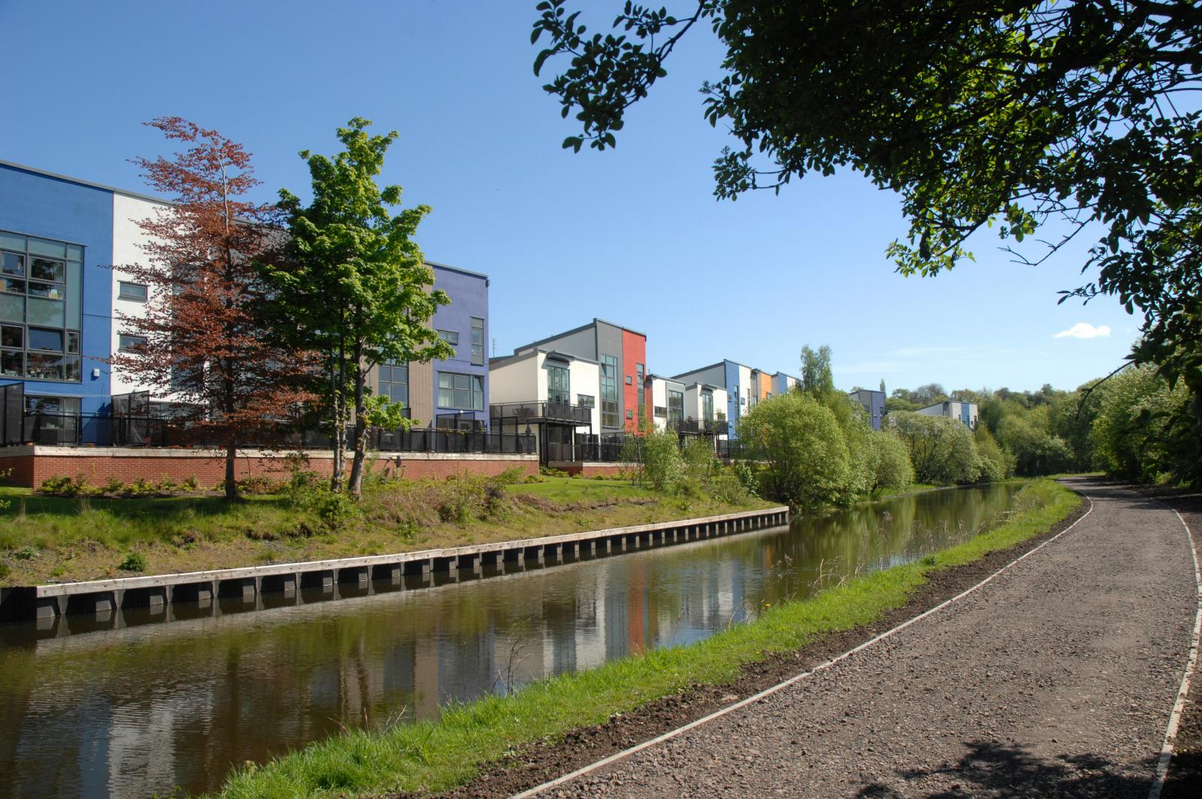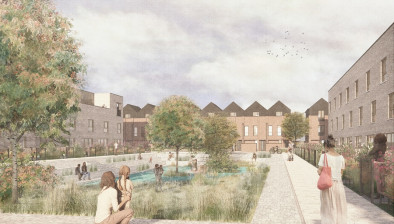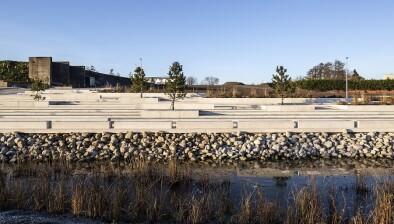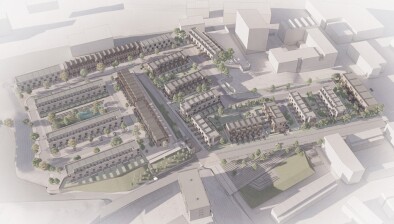Partnership to help deliver 3,000 new canalside homes in North Glasgow
More than 3,000 new homes are set to be delivered along Glasgow’s canal network amid evidence of the increasing health benefits of canalside living.

Research published earlier this year found that people living within 700 metres of the canal had a 15% lower risk of suffering from chronic life-shortening diseases.
During an update on the progress of the Glasgow Canal Regeneration Partnership (GCRP), Glasgow City Council said £750 million of public and private investment will be spent on regeneration projects along the Forth and Clyde canal in the north of the city as part of its Canal Action Plan for 2021-26.
Glasgow City Council said £750 million of public and private investment will be ploughed into regeneration projects along the Forth and Clyde canal in the north of the city.
The GCRP was formalised through a 2015 Memorandum of Understanding between Glasgow City Council, Scottish Canals, and Bigg Regeneration. The key output of the Partnership was the Canal Action Plan (CAP) 2015-2020, which set out strategic, thematic and geographic areas of focus for the five-year period.
Key developments delivered and ongoing along the canal corridor include the ‘Smart Canal’ - a multi-award winning project and a European first for the city, the scheme tackles flooding in North Glasgow and unlocks over 100 hectares for regeneration; hundreds of new homes at Maryhill and Sighthill; the Pinkston Watersports complex; Rockvilla - the base of the National Theatre of Scotland; the Claypits Local Nature Reserve; The Whisky Bond - a seven-floor cultural and creative hub; The Loading Bay indoor skatepark; the Sighthill Link; and the Stockingfield Bridge.
In 2021, a new five-year Canal Action Plan was developed by the partners and other local organisations. This was approved by the Partnership Board in December 2021.
The New Canal Action Plan 2021-26 notes what has been delivered in the last five years and sets out what is to be delivered in the next five years. The latter includes £750 million of public and private investment; over 3,000 new homes; City Deal investment to improve infrastructure, connectivity and unlock vacant land for development; a reduction in vacant and derelict land; improvements to greenspace, connectivity and active travel; improved health (research published earlier this year found that people living within 700 metres of the Canal had a 15% lower risk of suffering from chronic life-shortening diseases) and wellbeing; and the ongoing promotion of the area as an attractive place in which to live, work, and visit.
Councillor Ruairi Kelly, chair of the Neighbourhoods, Housing and Public Realm Committee at Glasgow City Council, said: “Recent years have seen tremendous progress made along the canal corridor, from new housing at Sighthill and Maryhill - with more to come at sites in between - to the creation of the Smart Canal to the development of creative, cultural and sports hubs and greater connections between communities on both banks of the canal. The transformation of the canal into an attractive area that truly delivers the economic, environmental social benefits we look for in regeneration projects is a real success story for Glasgow, and we can all look forward to the success of the new Canal Action Plan.”
Catherine Topley, CEO of Scottish Canals, said: “This next Canal Action Plan builds on the transformation of North Glasgow that has been delivered to date, from the creation of the Loading Bay skatepark, the Dundashill housing site in Port Dundas and the launch of the city’s only nature reserve at the Claypits to vibrant community events and new canal bridges which not only reconnect communities but provide essential links for active travel. We have seen what can be achieved when we work together, delivering £500m of investment into canalside communities that has created jobs, supported business growth, tackled health inequalities and attracted visitors. The collaboration between ourselves, Glasgow City Council and community groups is an exemplar of partnership working and I am incredibly excited to what the next phase will deliver for the people who live, work and study in North Glasgow.”
Chris Brown, executive chair and founder of igloo Regeneration, said: “The Glasgow Canal Regeneration Partnership is delivering truly transformational change across northern Glasgow and it’s a privilege to be involved with a project that will provide such a positive impact for the city. The Canal Action Plan rivals any UK regeneration initiative in terms of scale and ambition, and the project’s DNA is a perfect match for our guiding principles at igloo.
“We have seen continued success from our projects including Maryhill Locks and Dundashill, and these next five years will build upon the foundations of the work that has been achieved so far. Alongside the Canal Cooperative and other local partners, we will work together to create a climate resilient location for People, Place and Planet.”







